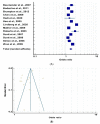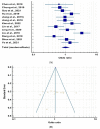A Systematic Review on the Association between Obesity and Mood Disorders and the Role of Gut Microbiota
- PMID: 37110147
- PMCID: PMC10144251
- DOI: 10.3390/metabo13040488
A Systematic Review on the Association between Obesity and Mood Disorders and the Role of Gut Microbiota
Abstract
Obesity is a complex health condition that increases the susceptibility to developing cardiovascular diseases, diabetes, and numerous other metabolic health issues. The effect of obesity is not just limited to the conditions mentioned above; it is also seen to have a profound impact on the patient's mental state, leading to the onset of various mental disorders, particularly mood disorders. Therefore, it is necessary to understand the mechanism underlying the crosstalk between obesity and mental disorders. The gut microbiota is vital in regulating and maintaining host physiology, including metabolism and neuronal circuits. Because of this newly developed understanding of gut microbiota role, here we evaluated the published diverse information to summarize the achievement in the field. In this review, we gave an overview of the association between obesity, mental disorders, and the role of gut microbiota there. Further new guidelines and experimental tools are necessary to understand the microbial contribution to regulate a balanced healthy life.
Keywords: gut–microbiota; mental disorders; metabolites; mood disorders; obesity.
Conflict of interest statement
The authors declare no conflict of interest.
Figures





References
Publication types
LinkOut - more resources
Full Text Sources

